Hello readers,
This is an informational blog created by a group of college students for the purpose of educating high school students on what exactly engineers do. We know that there is confusion in this area for students in high school. So there will be a blog posting for each project assigned to us. It will discuss the engineering problem as it was told to us, our brain storming process, the solution we chose, and a final lookback at the project.
Our group consists of three freshman college students. Michael Graham, Mechanical Engineer. Keith Danaher, Electrical Engineer. Scott Rocca, Theatrical Design and Construction Management.
This was our first project assigned. Problem: to build a Tennis Ball Launcher within certain parameters. The part that makes this challenging is that the bounds of what we can do are very strict. The idea is to somehow propel a tennis ball twenty-five feet and hit a 22" target, centered two feet in the air. We would be given 6 shots at the target within 3 minutes; and grades are based on total number of hits! The devise which must do this has to cost under $8. And it has to be self contained within 18"L x 18"W x 20"H. And finally this miracle machine must be fired with a trigger mechanism.
We considered our options. Compressed air, torsion, springs and elastic cords were discussed among our group as possible methods for launching the tennis ball. After weighing the pros and cons ,we decided to use springs as the main propelling force. Springs would give us a very consistant force variable. Thus we could ideally adjust our machine to shoot and hit the same place every time on the target.
Then after many sittings of discussion combined with drawn out,clay modeled, and computer modeling we had composed our machine design. We chose to make a replica of a "clay-pigeon-shooter." Basically we ended up making a modern catapult.
Next we discussed what type of material to use to build the launcher itself. We quickly decided wood was the most viable option because of its workability, low cost, and good looks.
First we bought a 2"x4"x8' board that we cut in half down the center to double our usable materials and keep a low cost. We built the frame within the maximum parameters first. Then made vertical supports for the pivot arm. The pivot point was supported by 2, 1 1/2" x 1 3/4" boards that had front and side braces to help with the momentum that the swing arm generated. The springs were attached to the end of the swing arm and then to the inside base of the catapult. On the inside base of the catapult the springs are held in place by 2 eye-hooks that were secured into the base. Our machine could be adjusted by moving the place where the springs connect to the pivot arm. We made the adjustments and tested it to see where the ball landed. We used this method of trial and error until we were able to hit a makeshift target that was set at the proper distance. Then we would just hope that our machine would do the same thing every time.
Two conduit clips were screwed into the back of the catapult and a third was attached in to the end of the swing arm under the tennis ball holder. A 1/4" steel rod was inserted between the three clips to form a latch. After loading and aiming were complete, to fire we would quickly remove the rod which would release the swing arm and fire the catapult.
On testing day Mike spoke in front of the class and talked about the catapult. Meanwhile Scott had been in training for firing the devise so he was in charge of shooting. And keith was in full command of ball retrevial.
We ended up hitting the target 4 out of 6 times. We got an acceptible grade and in the end we were satisfied with out work because our project LOOKED better than any other launcher.
The best design was a mimic of a slingshot. It had an adjustible ramp and elastic cords to guide and propell the ball. It used a gate latch for a trigger. They hit the target 6 out of 6 times because their design gave the most consistant shot possible. Bravo.
The most interesting project used air propulsion. A bike pump and PVC pipe. It was shocking because it worked well and got a 4 out of 6 and cost under $8!
All in all was a good test of basic engineering and principals in physics. The project is an introduction into the uses of budgeting, time and material management and project designing.
Thursday, February 14, 2008
Subscribe to:
Post Comments (Atom)


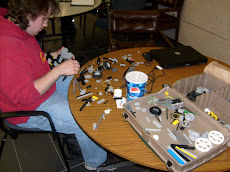
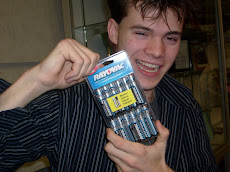








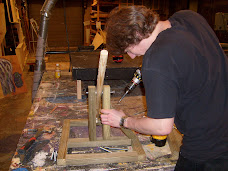
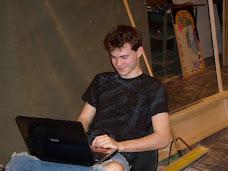
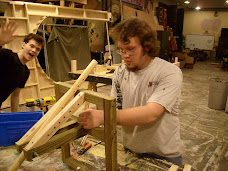

1 comment:
Very good description of the procedures to build your project. Did you base your work on any specific theory that you learned? Or was it only trial and error?
Do you have any "lessons learned"? That is: if you were to start again, what did you learn from this project that you would do next time around different and much better?
Post a Comment